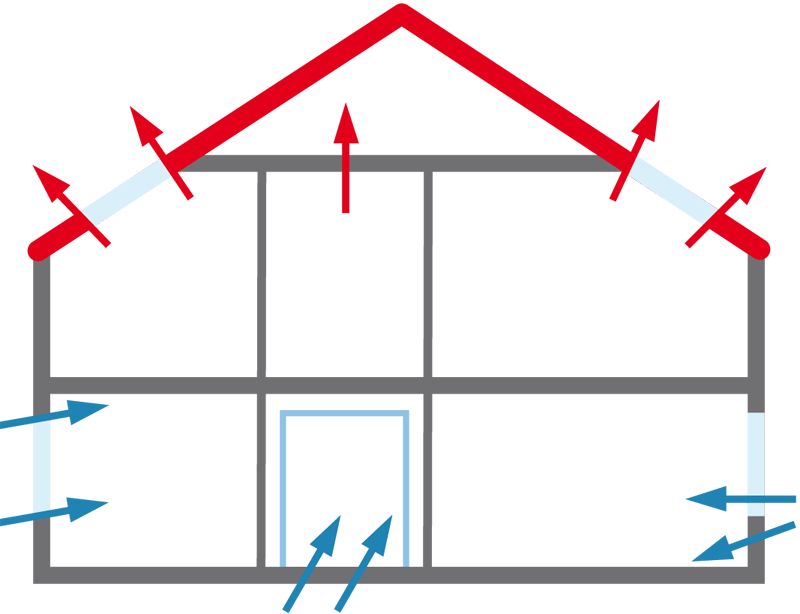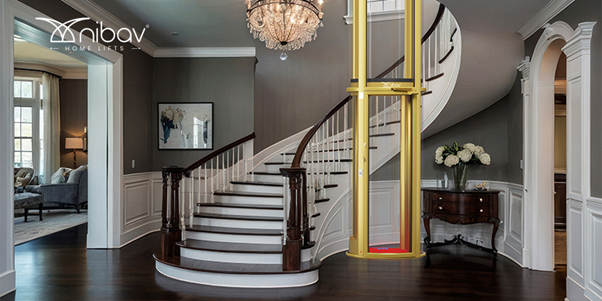Air tightness, once primarily associated with energy efficiency, has evolved into a fundamental concept with a myriad of applications across various sectors. The significance of preventing uncontrolled air leakage in buildings is now recognized not only for its role in reducing energy consumption but also for its impact on indoor air quality, occupant comfort, and the overall performance and longevity of structures. This article explores the wide-ranging applications of air tightness, examining how this concept is reshaping construction practices in residential, commercial, and industrial settings.
Residential Applications
Energy-Efficient Homes
The application of air tightness in residential construction has gained prominence with the increasing focus on energy-efficient homes. By sealing the building envelope tightly, homes can minimize heat loss during colder seasons and prevent unwanted heat gain in warmer climates. This results in reduced reliance on heating, ventilation, and air conditioning (HVAC) systems, leading to lower energy bills and a smaller carbon footprint.
Indoor Air Quality in Homes
Beyond energy efficiency, air tightness plays a crucial role in enhancing indoor air quality in homes. By controlling the infiltration of outdoor air, pollutants, allergens, and contaminants are minimized. This is particularly beneficial for occupants with respiratory conditions or allergies, creating a healthier living environment.
Moisture Management
In residential structures, air tightness is a key factor in moisture management. Leaks in the building envelope can allow moisture to infiltrate, leading to issues such as mold growth and structural damage. Properly sealed homes mitigate the risk of moisture-related problems, preserving the integrity of the structure and the health of its occupants.
Comfort and Noise Control
Air tightness contributes to enhanced comfort in homes by preventing drafts and maintaining consistent indoor conditions. Additionally, it acts as a barrier to external noise, creating a quieter and more peaceful living environment. This is especially valuable in urban areas or locations near sources of noise pollution.
Commercial Applications
Energy-Efficient Commercial Buildings
Similar to residential applications, air tightness is a cornerstone of energy efficiency in commercial buildings. From offices to retail spaces, tightly sealed envelopes contribute to reduced energy consumption, lower operational costs, and compliance with energy codes and standards.
Occupant Comfort and Productivity
In commercial settings, occupant comfort directly influences productivity. Air tightness plays a role in maintaining a comfortable indoor environment, free from drafts and temperature variations. This contributes to a more pleasant and conducive workspace, positively impacting the well-being and efficiency of employees.
HVAC System Optimization
Commercial buildings often rely on sophisticated HVAC systems to maintain indoor conditions. Air tightness allows these systems to operate more efficiently by minimizing the loss of conditioned air. This optimization not only reduces energy consumption but also extends the lifespan of HVAC equipment, lowering maintenance costs.
Sustainable Design and Certification
As sustainability becomes a priority in commercial construction, achieving air tightness is often a key element in green building certifications such as LEED (Leadership in Energy and Environmental Design). Meeting stringent air tightness standards demonstrates a commitment to energy efficiency and environmental responsibility.
Industrial Applications
Process Control in Manufacturing
In industrial settings, particularly those involving manufacturing processes, air tightness is crucial for process control. Contaminants, particulates, and external elements can negatively impact production processes. A tightly sealed facility helps maintain clean and controlled environments, ensuring the quality and efficiency of manufacturing operations.
Cleanroom Facilities
Industries such as pharmaceuticals, electronics, and biotechnology often require cleanroom facilities with stringent air quality standards. Air tightness is imperative in these environments to prevent the ingress of contaminants and maintain the sterile conditions necessary for sensitive manufacturing processes.
Energy Conservation in Warehousing
Warehousing facilities, which often encompass large spaces, can benefit from air tightness in terms of energy conservation. Tightly sealed warehouses experience less temperature variation, reducing the load on heating or cooling systems and creating more favorable conditions for the storage of goods.
Environmental Controls in Laboratories
Laboratories, whether in academic institutions or private research facilities, demand precise environmental controls. Air tightness is essential in laboratories to prevent the escape of hazardous substances, maintain controlled temperatures, and ensure the accuracy of experiments and research activities.
Specialized Applications
Passive House Design
The concept of a passive house, characterized by its ultra-energy efficiency and minimal ecological footprint, heavily relies on air tightness. In passive house design, the building envelope is meticulously sealed to reduce the need for active heating or cooling systems, relying instead on passive measures like insulation and solar gain.
Historic Building Preservation
Air tightness is increasingly recognized as a valuable tool in preserving historic buildings. While maintaining the architectural integrity, sealing leaks in the building envelope helps protect historical structures from the detrimental effects of moisture, drafts, and external pollutants.
Data Centers
Data centers, critical for the functioning of modern technology infrastructure, require controlled environments with precise temperature and humidity levels. Air tightness is vital in data centers to prevent the ingress of dust, contaminants, and fluctuations in temperature, safeguarding sensitive equipment and ensuring uninterrupted operations.
Challenges and Considerations
While the applications of air tightness are vast and varied, there are challenges and considerations that should be addressed:
Balancing Air Tightness with Ventilation
Achieving an optimal balance between air tightness and ventilation is crucial to prevent indoor air quality issues. Implementing mechanical ventilation systems ensures a controlled supply of fresh air while maintaining the benefits of a tight building envelope.
Construction Practices and Materials
The effectiveness of air tightness relies on meticulous construction practices and the use of appropriate materials. Attention to detail during construction, proper sealing techniques, and the selection of high-quality building materials are essential for realizing the full potential of air tightness.
Occupant Behavior
The behavior of occupants can influence the success of air tightness measures. Education and communication about the benefits of an air-tight building, as well as guidelines for proper operation, are important to ensure the longevity and effectiveness of the sealed envelope.
Conclusion
In conclusion, the applications of air tightness extend across a spectrum of building types and industries, influencing everything from residential energy efficiency to the precision requirements of data centers. As the construction industry continues to embrace sustainable practices, air tightness stands out as a versatile and indispensable element in achieving energy efficiency, maintaining indoor comfort, and ensuring the longevity of structures. While challenges exist, advancements in construction technologies, a growing awareness of building performance, and the integration of air tightness into building codes and standards are propelling this concept into the mainstream of contemporary construction practices. As the global emphasis on sustainability intensifies, the applications of air tightness are poised to play an increasingly pivotal role in shaping the buildings and environments of the future.







